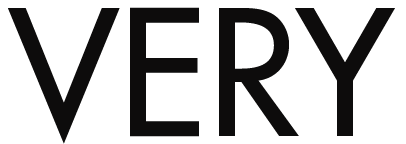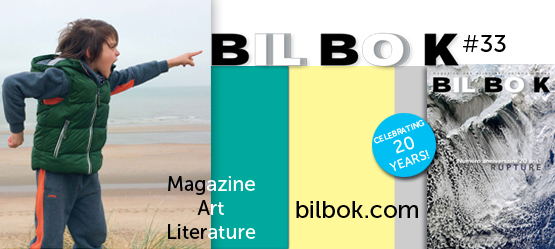Don Ignatio, a mestizo herbalist in a small village called Infierno, about an hour drive from Puerto Maldonado - filmstill from Curanderos
">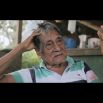 The lights go on: Uscha and I right after the ayahuasca ceremenoy led by Don Ignatio - post-ceremony-selfie
">
The lights go on: Uscha and I right after the ayahuasca ceremenoy led by Don Ignatio - post-ceremony-selfie
">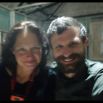 VERY important reading before interviewing Don Ignatio in Infierno… - photo Uscha Pohl
">
VERY important reading before interviewing Don Ignatio in Infierno… - photo Uscha Pohl
">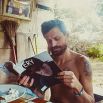 Majestic - Madre de Dios river - photo Egor Indiani
">
Majestic - Madre de Dios river - photo Egor Indiani
"> Port of Puerto Maldonado - photo Alex Doyle
">
Port of Puerto Maldonado - photo Alex Doyle
">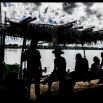 We booked a boat and went downstream to Palma Real, a village of about 400 tribes people - photo Egor Indiani
">
We booked a boat and went downstream to Palma Real, a village of about 400 tribes people - photo Egor Indiani
">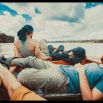
[…] the shaman opened up about questions on life and death, good and evil. For me, this was a completely different perspective far far away from our Western tradition, claiming being able to communicate with spirits of the dead as well... - filmstill from Curanderos ">![[…] the shaman opened up about questions on life and death, good and evil. For me, this was a completely different perspective far far away from our Western tradition, claiming being able to communicate with spirits of the dead as well... […] the shaman opened up about questions on life and death, good and evil. For me, this was a completely different perspective far far away from our Western tradition, claiming being able to communicate with spirits of the dead as well...](../../../images/stories/issue20/egor2/thumbs/e07.jpg) Meeting with Alex again for a Sapo ritual in Pisac… I saw creatures like nothing from this world. I saw a quiet undistinguished shaman in shorts and T-shirt who within two hours of the ritual turned into a warrior in ancient Incan armour sitting on a big throne from bones - who invited Ayahuasca as a giant anaconda and healed people with tobacco smoke...... - photo Alex Doyle
">
Meeting with Alex again for a Sapo ritual in Pisac… I saw creatures like nothing from this world. I saw a quiet undistinguished shaman in shorts and T-shirt who within two hours of the ritual turned into a warrior in ancient Incan armour sitting on a big throne from bones - who invited Ayahuasca as a giant anaconda and healed people with tobacco smoke...... - photo Alex Doyle
">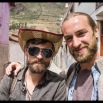 The experience was life changing, the strongest of my life - photo Alex Doyle
">
The experience was life changing, the strongest of my life - photo Alex Doyle
">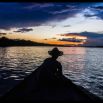 Dr. Filip Tylš is one of the scientists exploring the therapeutical potential of substances such as ketamine and psilocybin - filmstill from Curanderos
">
Dr. Filip Tylš is one of the scientists exploring the therapeutical potential of substances such as ketamine and psilocybin - filmstill from Curanderos
"> I was waiting for winter: to contrast the sunny and green Andes / jungle with grey and gloomy images of Prague in winter - photo Katarína Valičková
">
I was waiting for winter: to contrast the sunny and green Andes / jungle with grey and gloomy images of Prague in winter - photo Katarína Valičková
"> The concept of a guerrilla film – leave minimum impact, actively participate and get as close as possible to your subject - photo Adéla Stašová
">
The concept of a guerrilla film – leave minimum impact, actively participate and get as close as possible to your subject - photo Adéla Stašová
">
Curanderos by Egor Indiani, out now! - poster art Daniel Goliaš ">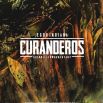
 The lights go on: Uscha and I right after the ayahuasca ceremenoy led by Don Ignatio - post-ceremony-selfie
">
The lights go on: Uscha and I right after the ayahuasca ceremenoy led by Don Ignatio - post-ceremony-selfie
"> VERY important reading before interviewing Don Ignatio in Infierno… - photo Uscha Pohl
">
VERY important reading before interviewing Don Ignatio in Infierno… - photo Uscha Pohl
"> Majestic - Madre de Dios river - photo Egor Indiani
">
Majestic - Madre de Dios river - photo Egor Indiani
"> Port of Puerto Maldonado - photo Alex Doyle
">
Port of Puerto Maldonado - photo Alex Doyle
"> We booked a boat and went downstream to Palma Real, a village of about 400 tribes people - photo Egor Indiani
">
We booked a boat and went downstream to Palma Real, a village of about 400 tribes people - photo Egor Indiani
">
[…] the shaman opened up about questions on life and death, good and evil. For me, this was a completely different perspective far far away from our Western tradition, claiming being able to communicate with spirits of the dead as well... - filmstill from Curanderos ">
![[…] the shaman opened up about questions on life and death, good and evil. For me, this was a completely different perspective far far away from our Western tradition, claiming being able to communicate with spirits of the dead as well... […] the shaman opened up about questions on life and death, good and evil. For me, this was a completely different perspective far far away from our Western tradition, claiming being able to communicate with spirits of the dead as well...](../../../images/stories/issue20/egor2/thumbs/e07.jpg) Meeting with Alex again for a Sapo ritual in Pisac… I saw creatures like nothing from this world. I saw a quiet undistinguished shaman in shorts and T-shirt who within two hours of the ritual turned into a warrior in ancient Incan armour sitting on a big throne from bones - who invited Ayahuasca as a giant anaconda and healed people with tobacco smoke...... - photo Alex Doyle
">
Meeting with Alex again for a Sapo ritual in Pisac… I saw creatures like nothing from this world. I saw a quiet undistinguished shaman in shorts and T-shirt who within two hours of the ritual turned into a warrior in ancient Incan armour sitting on a big throne from bones - who invited Ayahuasca as a giant anaconda and healed people with tobacco smoke...... - photo Alex Doyle
"> The experience was life changing, the strongest of my life - photo Alex Doyle
">
The experience was life changing, the strongest of my life - photo Alex Doyle
"> Dr. Filip Tylš is one of the scientists exploring the therapeutical potential of substances such as ketamine and psilocybin - filmstill from Curanderos
">
Dr. Filip Tylš is one of the scientists exploring the therapeutical potential of substances such as ketamine and psilocybin - filmstill from Curanderos
"> I was waiting for winter: to contrast the sunny and green Andes / jungle with grey and gloomy images of Prague in winter - photo Katarína Valičková
">
I was waiting for winter: to contrast the sunny and green Andes / jungle with grey and gloomy images of Prague in winter - photo Katarína Valičková
"> The concept of a guerrilla film – leave minimum impact, actively participate and get as close as possible to your subject - photo Adéla Stašová
">
The concept of a guerrilla film – leave minimum impact, actively participate and get as close as possible to your subject - photo Adéla Stašová
">
Curanderos by Egor Indiani, out now! - poster art Daniel Goliaš ">

